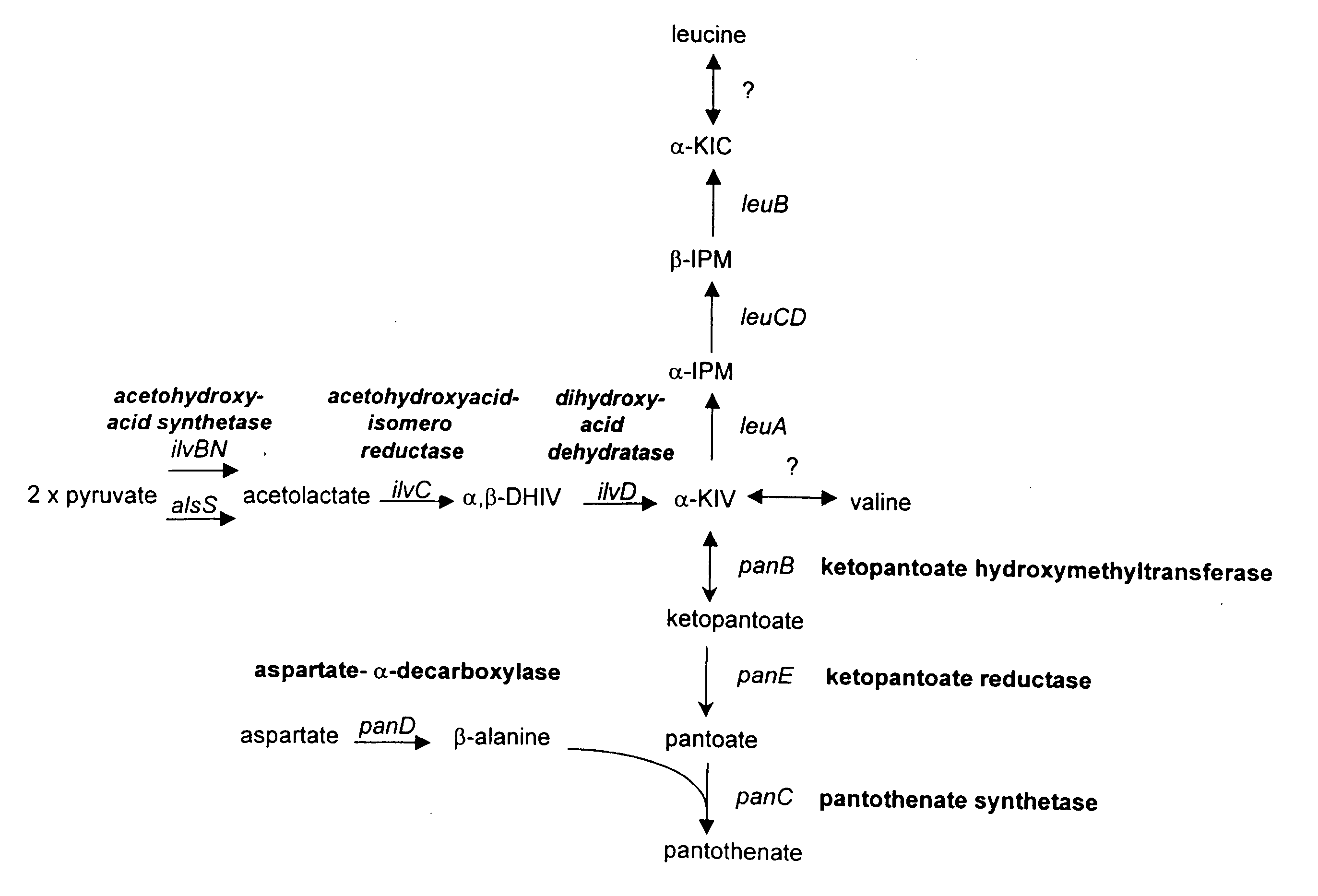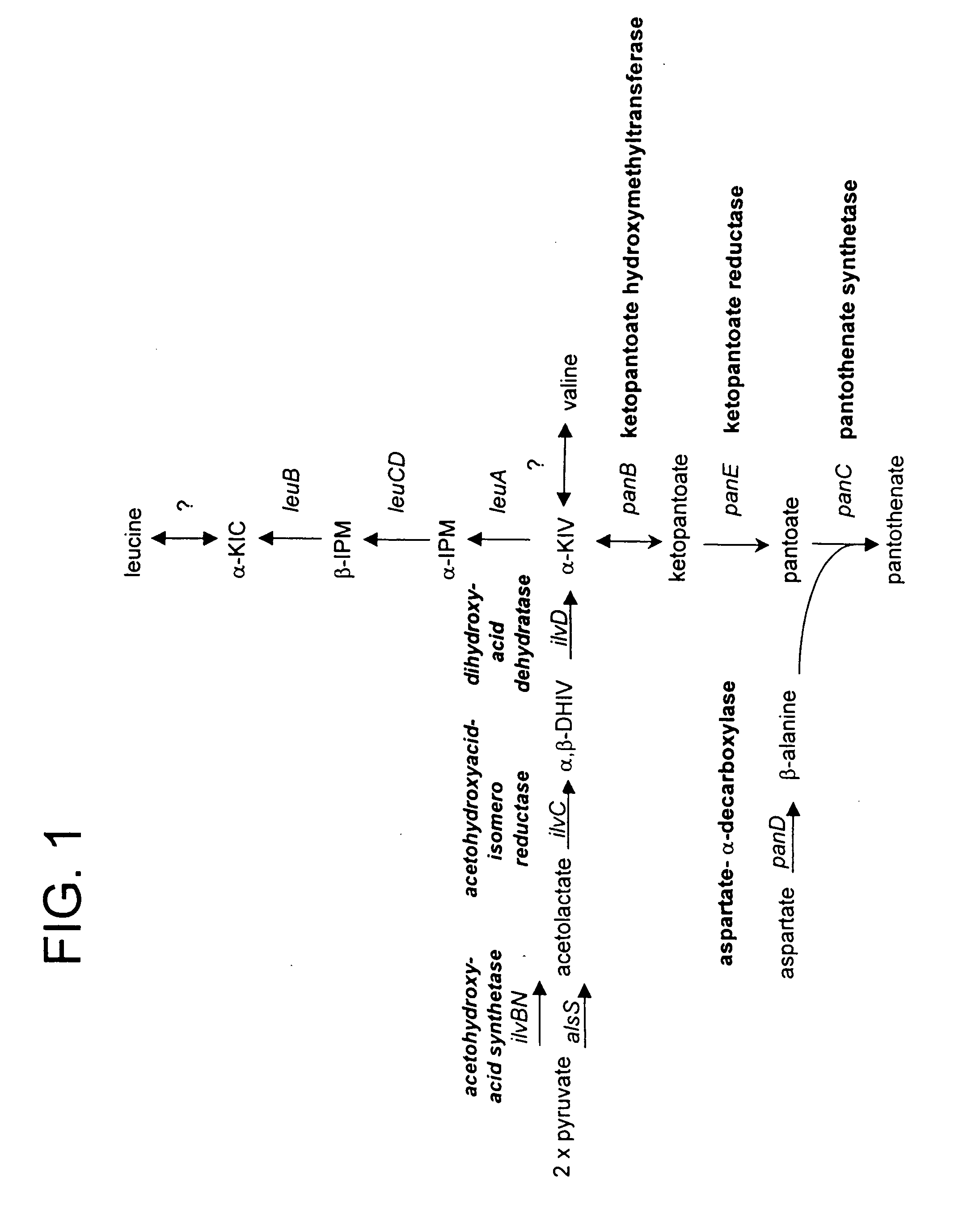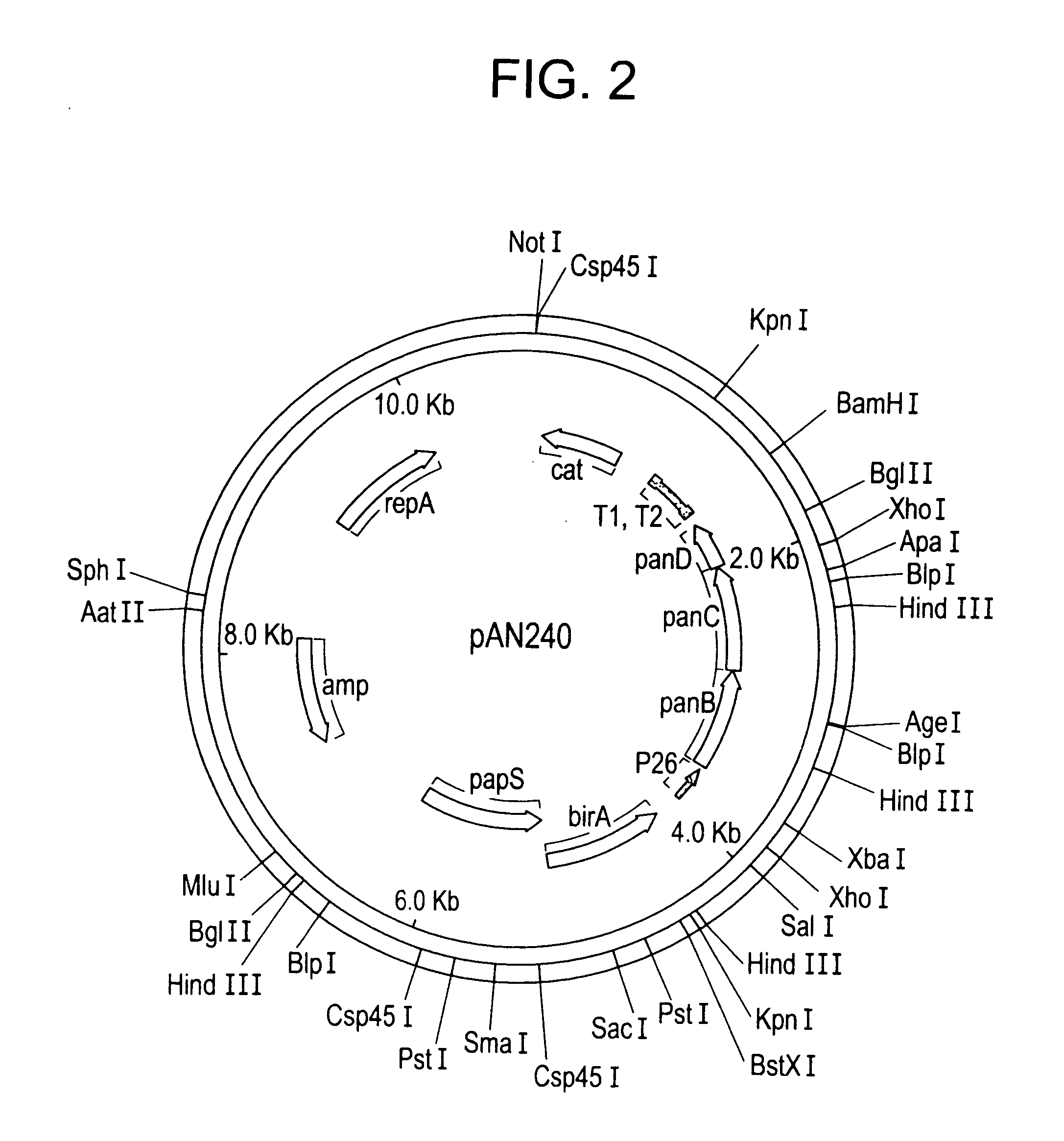Methods and microorganisms for production of panto-compounds
a technology of microorganisms and pantose, which is applied in the field of methods and microorganisms for the production of pantose compounds, can solve the problems of excessive substrate cost and hampered processing, and achieve the effects of reducing pantose production, increasing pantose gene production, and reducing pantose gene production
- Summary
- Abstract
- Description
- Claims
- Application Information
AI Technical Summary
Benefits of technology
Problems solved by technology
Method used
Image
Examples
examples
General Methodology:
[0187] Strains. Bacillus subtilis strains of the present invention are generally derived from either of two strains. The first is variously named “168”, “1A1”, or “RL-1”. The genotype is trpC2. This strain was derived from the wild type “Marburg” strain by mutagenesis and has been the basis of much of the molecular biology work done on B. subtilis. The second strain is PY79, a prototrophic derivative of 168 that was made Trp+ by transduction from the wild type strain W23.
[0188] Media. Standard minimal medium for B. subtilis is comprised of 1× Spizizen salts and 0.5% glucose. Standard solid “rich medium” is Tryptone Blood Agar Broth (Difco), and standard liquid “rich medium” is VY, a mixture of veal infusion broth and yeast extract. For testing production of pantothenate in liquid test tube cultures, an enriched form of VY, called “Special VY” or “SVY” is used. For batch fermentations, SVYG and PFMG are used. The compositions of these media are given below. [01...
example i
Enhanced Production of a Panto-Compound Using Bacteria Overexpressing panBCD Gene Products
[0206] This Example describes the cloning of the B. subtilis panBCD operon and the generation of microorganisms overexpressing the panBCD gene products.
[0207] To clone the B. subtilis panBCD operon, a plasmid library of B. subtilis GP275 (a derivative of 168) genomic DNA was transformed in E. coli BM4062 (birAts), and temperature resistant clones were selected at 42° C. By comparison of restriction maps to the genome sequence, one particular clone was deduced to contain the B. subtilis birA gene and the adjacent panBCD genes. This plasmid was named pAN201.
[0208] To overexpress the panBCD operon and produce pantothenate, the native promoter of the panBCD operon was replaced by either of two strong, constitutive promoters derived from the B. subtilis bacteriophage SP 01. These two promoters are named P26 and P15. In addition, either of two artificial ribosome binding sites (RBSs) were used to ...
example ii
Enhanced Production of a Panto-Compound Using Bacteria Overexpressing the panE1 Gene Product—Ketopantoate Reductase
[0213] This Example describes the cloning of the B. subtilis panE1 gene and the generation of microorganisms overexpressing the panE1 gene product.
[0214] Pan− B. subtilis strains (e.g., B. subtilis mutants blocked in the synthesis of pantothenic acid) had previously been isolated, one of which was reported to be affected in ketopantoate reductase activity (Baigori et al. (1991) J. Bacteriol. 173:4240-4242). However, the mutations in these strains were incorrectly mapped to the purE-tre interval of the B. subtilis genetic map which does not contain the panE or panBCD genes. Furthermore as shown below, a panE mutant does not have a Pan− phenotype as the ilvC gene product can substitute for the panE gene product in B. subtilis as in other bacterial strains such as E. coli. More recently, the S. typhimuruim panE gene has been located and determined to be allelic to apbA, ...
PUM
| Property | Measurement | Unit |
|---|---|---|
| Fraction | aaaaa | aaaaa |
| Density | aaaaa | aaaaa |
| Density | aaaaa | aaaaa |
Abstract
Description
Claims
Application Information
 Login to View More
Login to View More - R&D
- Intellectual Property
- Life Sciences
- Materials
- Tech Scout
- Unparalleled Data Quality
- Higher Quality Content
- 60% Fewer Hallucinations
Browse by: Latest US Patents, China's latest patents, Technical Efficacy Thesaurus, Application Domain, Technology Topic, Popular Technical Reports.
© 2025 PatSnap. All rights reserved.Legal|Privacy policy|Modern Slavery Act Transparency Statement|Sitemap|About US| Contact US: help@patsnap.com



